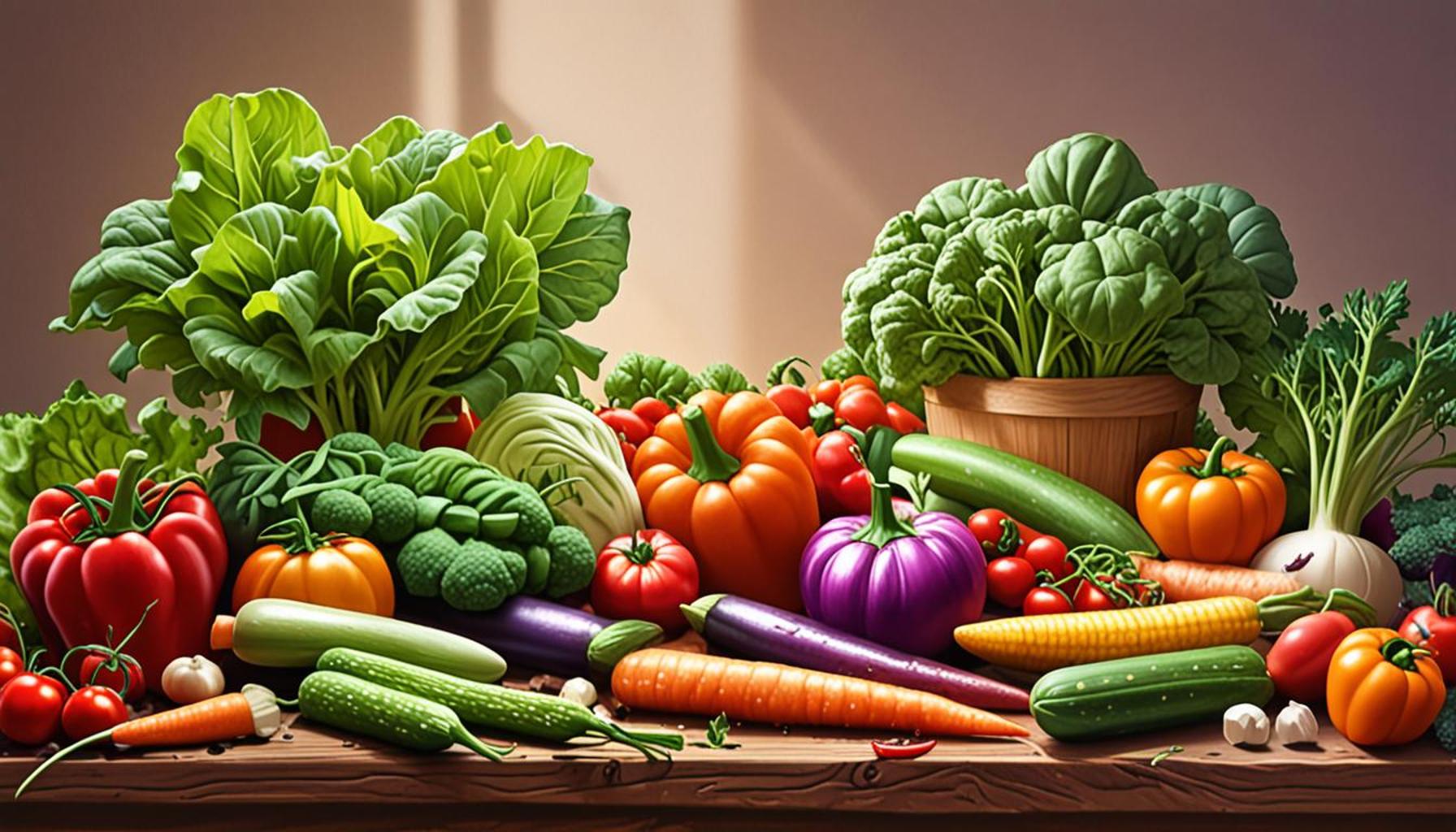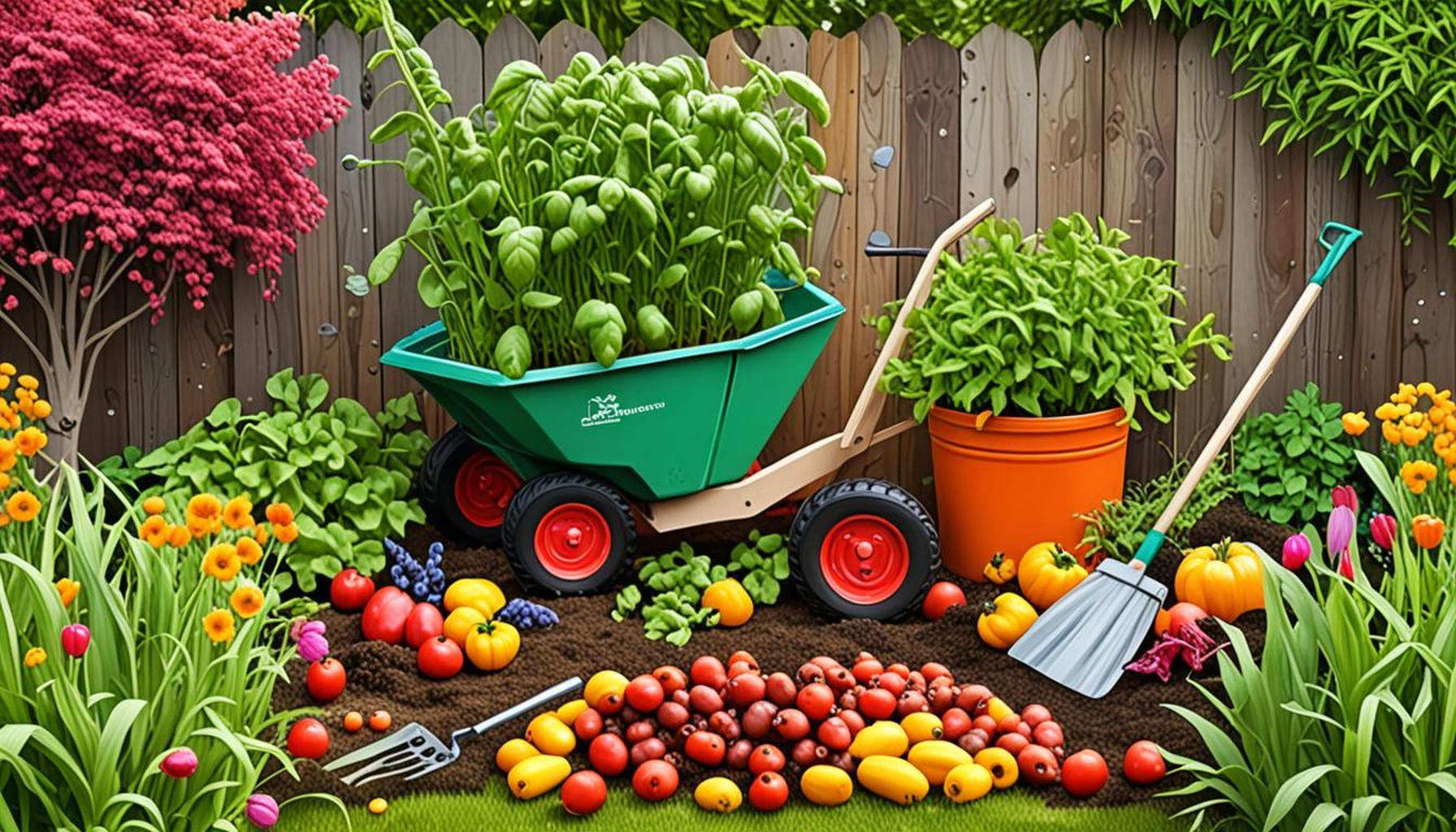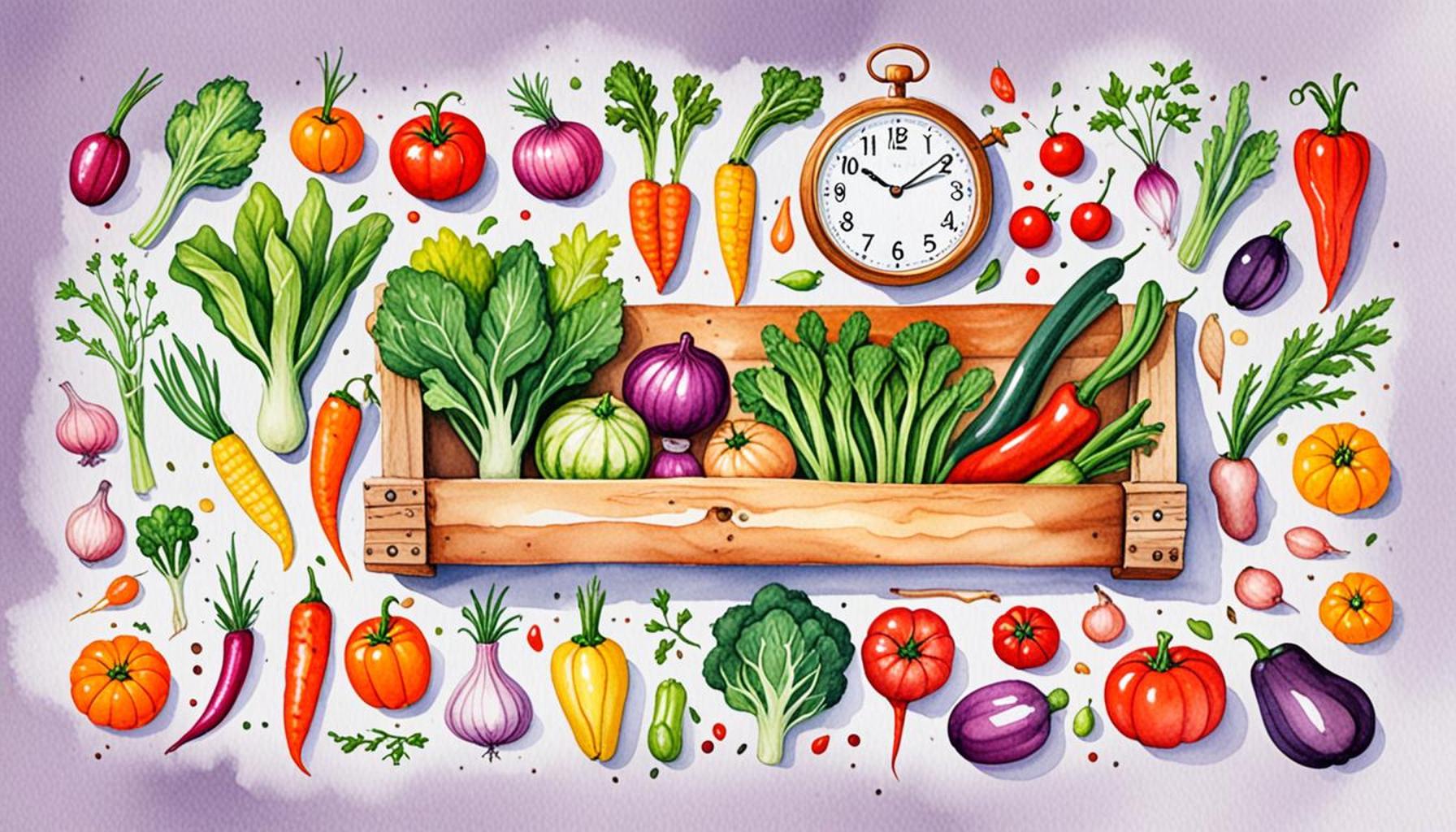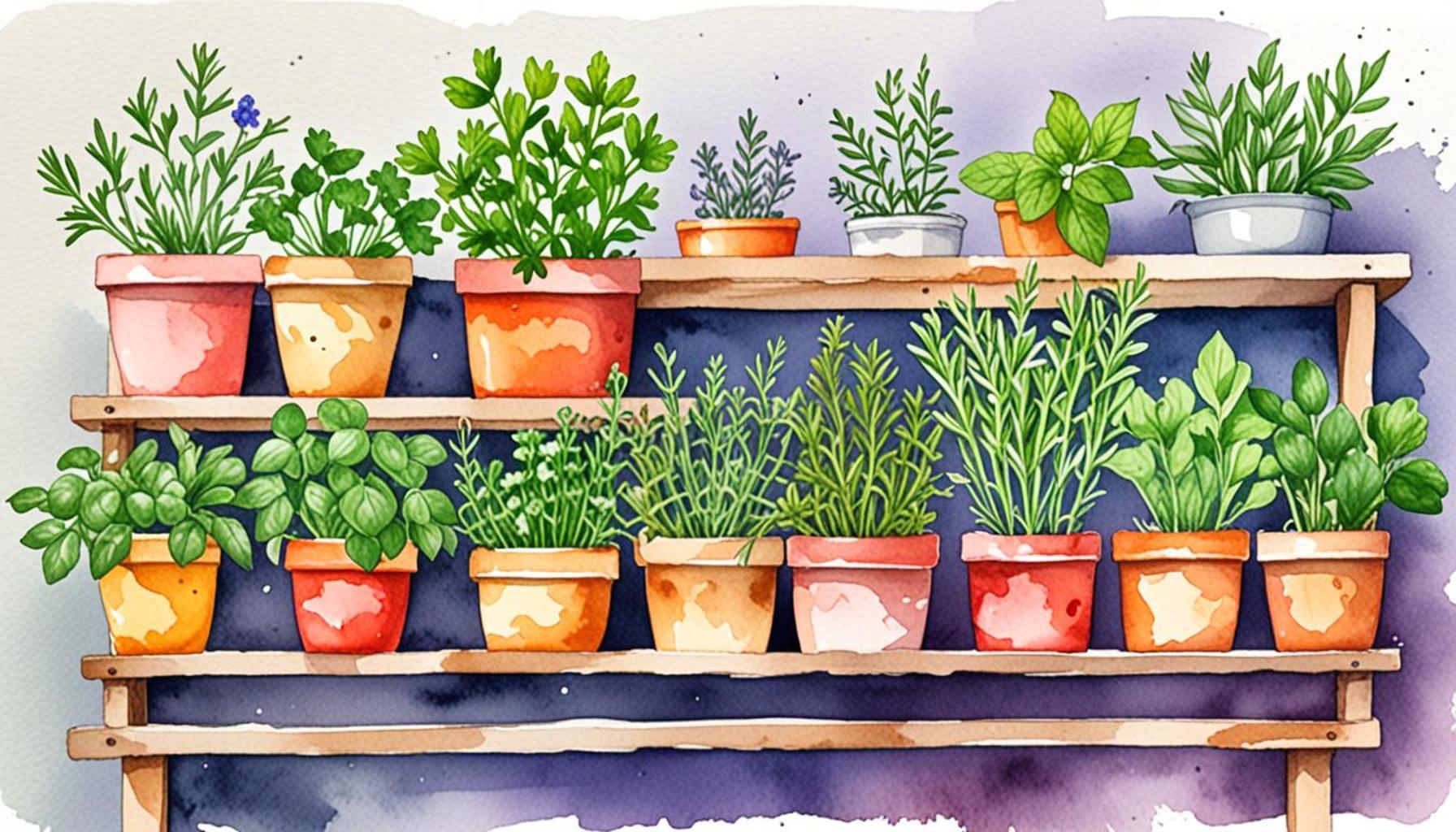Tips for Harvesting Vegetables: When and How to Do It

Get Ready for a Bountiful Harvest
Harvesting fresh vegetables can be one of the most rewarding experiences for any gardener. Knowing when and how to pick your crops is essential for maximizing flavor, nutrition, and longevity. Timing your harvest correctly can mean the difference between a delightful meal and a disappointing produce experience.
Why Timing Matters
Every vegetable has a unique growth cycle and optimal harvesting window. Recognizing the importance of this timing can greatly enhance your gardening experience. Here are some crucial factors to consider:
- Flavor: Vegetables picked at their peak ripeness offer a burst of flavor that is often lost when harvested too early or too late. For instance, homegrown tomatoes left on the vine until they are fully matured are sweet and juicy, while those picked prematurely can taste bland and underripe.
- Nutritional Value: Overripe or underripe vegetables can lose essential nutrients. For example, bell peppers contain more vitamin C when harvested at full color than when green. Harvesting at the right time can ensure you’re getting the maximum health benefits from your produce.
- Storage & Shelf Life: Proper timing ensures longer-lasting freshness. Carrots that are harvested at the right stage can be stored for months without losing their crispness, while those left in the ground too long may become woody and spoil more quickly.
Common Vegetables and Their Harvest Times
Understanding the right time to harvest various vegetables significantly boosts your gardening success. Here are some examples:
- Tomatoes: Should be harvested when they are fully colored, showing a deep red hue, and slightly soft to the touch. This is usually when they are at their sweetest, providing the perfect addition to salads and sauces.
- Carrots: Optimal when they are about 1 inch in diameter. Gently pull them from the soil to avoid breaking. Carrots harvested at this size tend to be tender and flavorful, ideal for cooking or snacking.
- Lettuce: Pick leaves when they are young and tender, ideally before flowering. This is crucial as bolting can make the leaves bitter. A regular harvest encourages continuous growth, ensuring a steady supply throughout the season.
Equip yourself with the right techniques to ensure you harvest quality produce. Utilize tools such as pruning shears for clean cuts and a basket to gather your bounty without bruising. Whether you’re a novice or a seasoned gardener, these tips will enhance your gardening journey. Remember, the satisfaction of biting into fresh, homegrown vegetables is unparalleled. Stay tuned as we explore effective methods for harvesting delicious homegrown veggies in future articles!
DISCOVER MORE: Click here to learn about adapting your techniques to the climate
Harvesting Your Vegetables Effectively
After determining the optimal time for harvesting your homegrown vegetables, it’s crucial to delve deeper into the how of the harvesting process. Utilizing effective techniques not only maximizes the quality and flavor of your harvest but also ensures that your plants will remain healthy and productive for future growing seasons. Below, we outline essential harvesting methods and tools that can help you enjoy a bountiful yield.
Gather Your Tools
To embark on a successful harvesting journey, the right tools are paramount. Each tool serves a specific purpose in ensuring that your vegetables are harvested with care. Here are some indispensable items for your harvesting toolkit:
- Garden Pruners or Shears: These are essential for delicately cutting vegetables like tomatoes, peppers, and herbs without causing unnecessary damage to the plant. For example, using pruners preserves the integrity of the stem, allowing for continued growth.
- Garden Fork: Ideal for root vegetables such as carrots, potatoes, and beets, a garden fork helps to loosen the soil gently, releasing the crops without breaking them. This tool is particularly useful for well-established gardens where roots may have become entwined with soil.
- Harvest Basket or Bag: A sturdy basket or bag facilitates the collection of your produce. Opt for one with a flat bottom to minimize bruising and damage during transport. There are also specialized mesh bags that allow for airflow, prolonging freshness on the way back from the garden.
- Gloves: Protecting your hands is essential, especially when harvesting prickly or thorny vegetables, like certain varieties of cucumbers or raspberries. Moreover, gloves prevent contamination from any residual pesticides or dirt.
Harvesting Techniques
Beyond having the right tools, the techniques you employ during harvesting can significantly impact your yield. Here are several critical tips for harvesting various vegetables:
- Use a Gentle Touch: Harvesting with care is essential to avoid bruising your vegetables. To check ripeness, a gentle squeeze can be effective, particularly for fruits such as tomatoes and pears. If a vegetable feels firm yet slightly soft, it may be ready for picking.
- Cut, Don’t Pull: For crops like peppers, zucchini, and eggplant, using pruners to snip the fruit is imperative. Pulling these vegetables can stress the plant and damage the supporting stems, which may halt further production.
- Leave Some Crop for Future Growth: When harvesting leafy greens such as lettuce, kale, or Swiss chard, consider the cut-and-come-again method. By trimming the outer leaves while leaving the inner immature ones intact, it encourages regrowth, allowing for a prolonged harvest over time.
- Timing of the Day: The best times to harvest are usually cool early mornings or late afternoons. During these times, vegetables retain more moisture, making them crisper and fresher, which enhances their overall flavor and quality.
By equipping yourself with the right tools and mastering these harvesting techniques, you’re setting the stage for a successful and enjoyable gardening experience. Different vegetables have unique needs and harvesting methods, and comprehending these nuances can significantly improve your gardening success. Stay tuned for our next sections, where we will explore specific harvesting methods tailored to a variety of crops you may be growing!
| Harvest Timing | Indicators for Readiness |
|---|---|
| Early Maturity | Look for bright colors and firm texture. |
| Seasonal Indicators | Seasonal changes and days to maturity affect flavor and texture. |
| Time of Day | Harvest in the morning when temperatures are cooler. |
| Test for Ripeness | Check feel and firmness regularly to ensure optimal taste. |
When engaging in the process of harvesting vegetables, understanding the right time enhances both the quality of the produce and the efficiency of your effort. Harvest Timing involves several critical aspects, including early maturity indicators that suggest when your vegetables are ready for picking. Observing the seasonal indicators can completely change the flavor profiles of your harvest, as the connection between the growing season and the vegetable’s development cannot be overstated.Moreover, the time of day is vital for maintaining the quality of your vegetables post-harvesting. Picking them in the morning allows you to easily preserve freshness. When it comes to determining the right moment for harvest, testing for ripeness through touch can never be overlooked. The combination of these tips not only ensures you gather vegetables at their best but also maximizes their nutritional value and taste. The implementation of these strategies will lead to a more fruitful harvesting experience.
LEARN MORE: Click here for essential tips
Understanding Vegetable Specifics: Harvesting Different Types
While general guidelines provide a solid foundation for harvesting vegetables, every type of vegetable comes with its own unique requirements and peak harvesting times. Understanding these specifics can elevate your gardening prowess and ensure a flavorful harvest. Below, we explore various categories of vegetables and the precise techniques that optimize their yield during harvesting.
Fruiting Vegetables
Fruiting vegetables such as tomatoes, peppers, and cucumbers require special attention to their maturity and color. As a rule of thumb, most fruits are picked when they exhibit their full color and are firm to the touch. For instance, tomatoes should be harvested when they turn a deep, rich red and yield slightly to pressure. On the other hand, bell peppers can be harvested green but will develop better sweetness if allowed to ripen fully to their respective colors.
Leafy Greens
Harvesting leafy greens like spinach, lettuce, and arugula can be done through a method known as “cut-and-come-again.” This technique encourages multiple harvests from the same plant by cutting leaves above the growth nodes. It’s essential to avoid excessive harvesting on any single plant—removing too many leaves can shock the plant and inhibit future growth. Ideally, pick no more than one-third of the plant at a time.
Root Vegetables
When it comes to root vegetables like carrots, beets, and radishes, timing your harvest is critical. Roots can remain in the ground until needed, but letting them sit too long can lead to tough, woody textures, particularly for carrots. When harvesting, gently loosen the soil around the roots using a garden fork, and then pull them up by the top greens. Avoid yanking, as this can cause the roots to break and stay in the ground.
Members of the Squash Family
Squash, including zucchini and pumpkins, offer another unique harvesting experience. Zucchini needs to be picked while they’re young and tender, typically around 6-8 inches long. This encourages continuous production of new fruits. On the other hand, pumpkins should be harvested when the rind is hard, and the vine starts to die back. A clue to their readiness includes a deep orange color and a hollow sound when tapped. Use sharp pruners to cut them from the stem for a clean removal.
Herbs and Aromatics
Herbs like basil, cilantro, and parsley can be harvested at any time once they’ve established a suitable height. The best practice for herbs is to clip above a leaf node—this encourages bushier growth rather than a long, leggy appearance. For herbs destined for drying, consider harvesting in the morning after any dew has evaporated to capture optimal flavor.
Timing and Weather Considerations
The weather at your local region can also dictate the best practices for harvesting. If rainfall has been abundant, many vegetables can be prone to rot and should be harvested promptly to minimize damage. Additionally, avoid harvesting right before a significant weather change; vegetables may be more vulnerable during this period. Remember that overcast days are often the best times for harvesting, as the cooler temperatures help to preserve freshness.
By tailoring your harvesting strategies to the particular types of vegetables you grow, you can optimize both the quality and longevity of your harvest. Each plant has its own rhythm and understanding these subtleties will significantly contribute to your gardening success. Keep exploring the nuances of vegetable harvesting to make the most of your garden bounty!
DISCOVER MORE: Click here to learn how to safeguard your harvest</
Conclusion: Mastering the Art of Harvesting Vegetables
Mastering the techniques of harvesting vegetables can transform your gardening journey, leading to a bountiful yield and delicious flavors. As we’ve explored throughout this article, recognizing the unique characteristics of each vegetable variety is crucial. From fruity vegetables that demand perfect color and firmness to leafy greens that benefit from thoughtful, gentle harvesting, these insights empower you to make informed decisions in your garden.
Moreover, understanding the importance of timing in relation to both the plant’s growth cycle and your local weather conditions enhances your ability to maximize flavor and shelf life. It’s not merely about when to harvest, but also how conditions can affect the health of your crops. Whether you’re efficiently utilizing the cut-and-come-again method for greens or patiently waiting for squash to fully ripen, the subtleties of vegetable harvesting require both knowledge and intuition.
So, as you venture into your garden with these tips in mind, consider keeping a journal to document your observations and experiences. This personal record will enrich your understanding and make each harvest an opportunity for growth and improvement. Remember, the better you understand your vegetables, the better the harvest you can achieve. Embrace this opportunity to connect with the rhythms of your garden, and enjoy the fruits of your labor in all their deliciousness!


